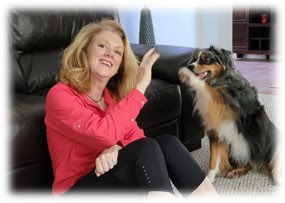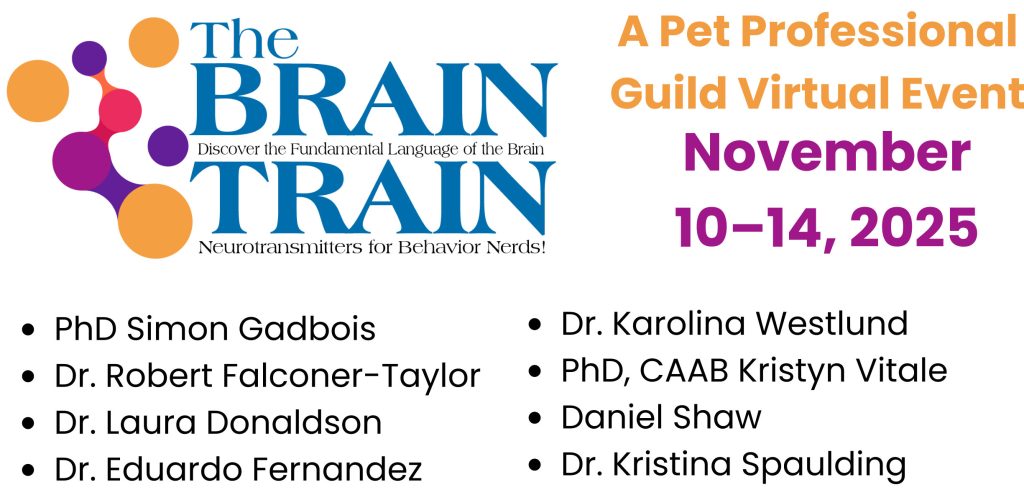Pets and Their People Blog
Easy Steps to Train a New Behavior
At DogNostics Education, we follow a simple method for each behavior we teach. This training plan is very effective and fun when used with the Train-Test-Train system!
There are four key training steps called:
- Acquisition
- Fluency
- Generalization
- Maintenance
We will refer to them as steps one through four here, describe them, and then provide a short video to review.
Step One – Acquisition
First, we have to get the behavior so we can reward it. Acquisition is the stage where your dog learns the behavior. There are several methods to get behavior. Use the most appropriate for you and your dog considering the particular behavior they are learning. (Remember, behaviors need to be age-appropriate.)
Step Two – Fluency
When the behavior is fluent – accurate, strong, reliable and consistent – name it. The name may be a verbal name or a physical gesture, such as a hand signal.
Step Three – Generalization
We can now take our behavior on the road so that your pet can perform it in a range of settings. The more places you practice, the better and more reliable your pet’s response will be!
Step Four – Maintenance
Use it or lose it! You and your pet will need to continually practice your skills. This consistency comprises the maintenance phase.
Check out this short video to help you with training steps one through four:
The Train-Test-Train System
Now let’s learn about Train-Test-Train and why the number five is so important.
Train – When teaching your pet a new behavior, repeat the training five times.
Test – Then, test to ensure the pet knows how to reliably perform the behavior before advancing your training by moving on or increasing the level of difficulty.
Always start with five small treats in one of your hands. Each time you cue the behavior and your pet responds correctly, you will ‘mark’ by clicking (or say “yes”) and then pay by delivering the treat.
At the end of the set of five, you will then count how many of your pet’s responses were correct to determine how you and your pet should proceed.
Train – If they score 4 or 5 correctly, then in the next training set, you can push the skill, meaning you can increase the difficulty. If they score 3, you may decide to stick on this level and repeat. Or, for a score of 3 correct repetitions or fewer, we urge you to drop the level of difficulty – make it easier for your pet to get it right!
You can learn more about Train-Test-Train here:
These are a few of the ten concepts that we believe provide invaluable information for all pet dog guardians and caregivers! To understand the finer details of this process, you can purchase The Top Ten Most Important Dog Training Knowledge Concepts for Pet Owners to Understand program and/or consult your trainer.
About the Author

Niki Tudge – M.B.A, PCBC-A, PCT-A, Six Sigma Black Belt, HCITB TS1, TS2 & TS3. DogNostics Founder & Faculty. Business SMARTS and Behavior SMARTS Mentor
As the founder and president of The Pet Professional Guild , DogNostics Education and The DogSmith, Niki has substantial leadership experience in the pet industry. Niki has published numerous articles on dog training and dog behavior and her pet dog training businesses have been featured in many publications including The New York Times. Niki’s professional credentials include; AABP-Professional Dog Trainer, AABP-Professional Dog Behavior Consultant, PCBC-A and PCT-A through the Pet Professional Accrediting Board and she has earned diplomas in Animal Behavior Technology and Canine Behavior Science & Technology through the Companion Animal Science Institute. Along with Niki’s business degree and MBA from Oxford Brookes University she is also a certified Six Sigma Black Belt, a HCITB TS1, TS2 & TS3 certified people trainer and a certified Facilitator and Business Project Manager.
DogNostics Education is a Pet Professional Guild Corporate Partner.

